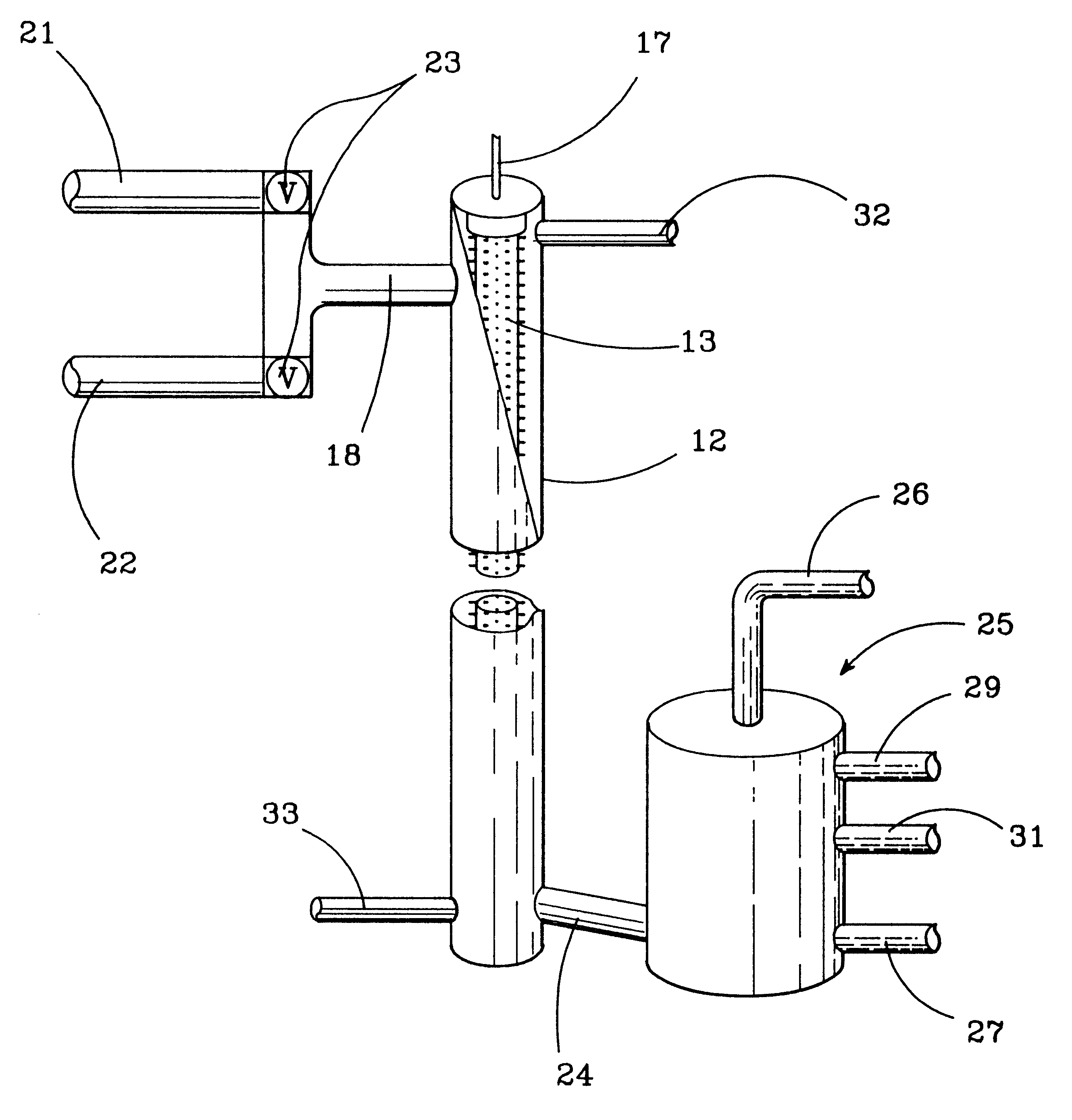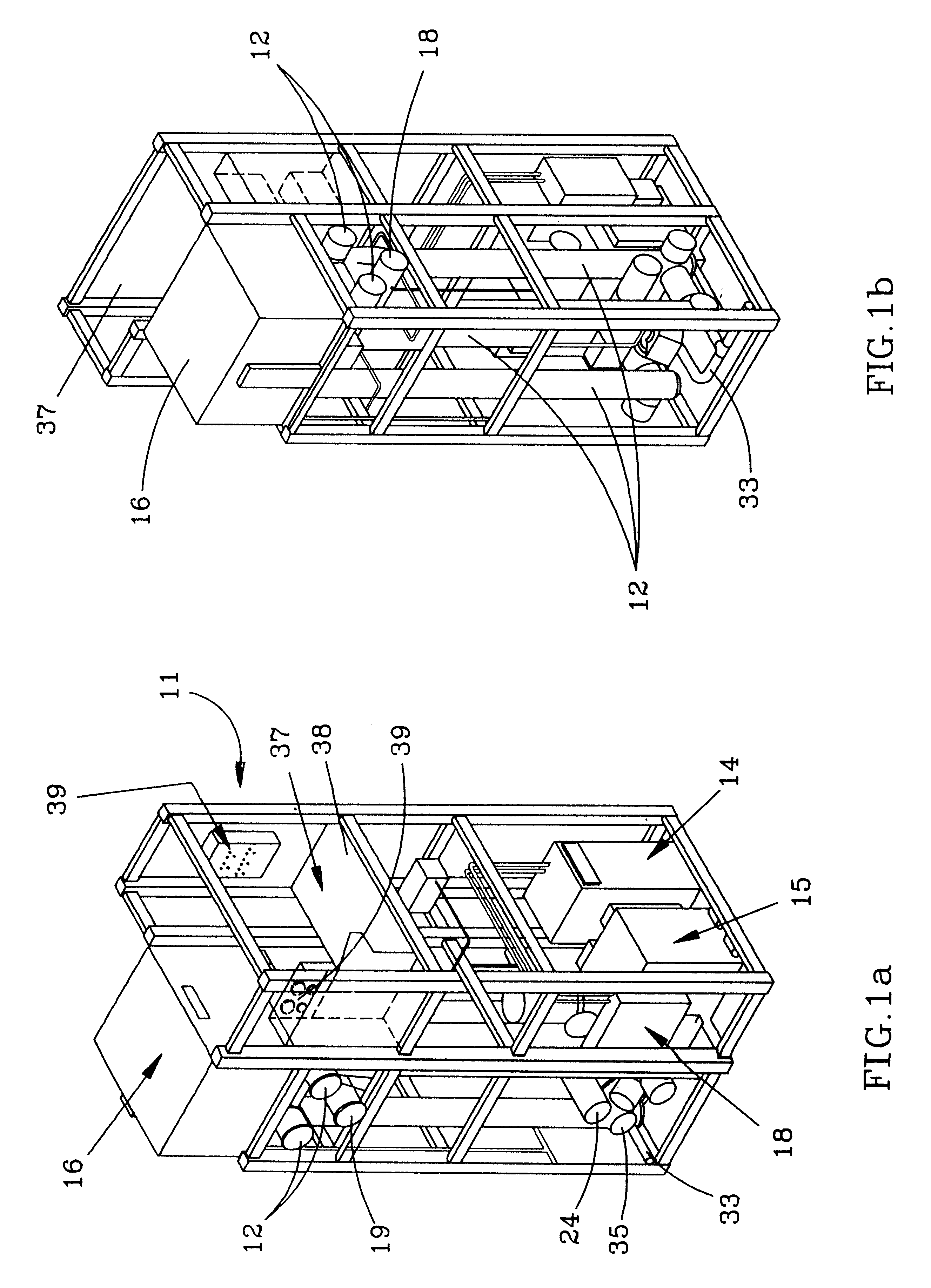Electrostatic method and means for removing contaminants from gases
- Summary
- Abstract
- Description
- Claims
- Application Information
AI Technical Summary
Benefits of technology
Problems solved by technology
Method used
Image
Examples
Embodiment Construction
The Preferred Embodiment
Referring to FIGS. 1a, 1b, and 2, an operational installation 11 of an electrostatic precipitator in accordance with the subject invention is fabricated as a unitary structure occupying a space that measures approximately 12'.times.12'.times.22'. The structure contains four grounded cylindrical corona electric reaction chambers 12. Each chamber 12 is about 12' long and 12" in diameter and contains a coronating electrode 13 mounted coaxially with its central axis. A variable transformer 14 and transformer rectifier 15 feed a high voltage pulse generator 16 (actually a pair of generators) connected in parallel to the leads 17 of electrodes 13. A main power switch panel 18 provides power for the installation 11.
At the upper end of each reaction chamber 12, an inlet 18 is provided for attachment to a source 21 of contaminated gas, such as the waste stream from a plasma furnace or industrial incinerator system or the exhaust from a manufacturing facility, and a so...
PUM
 Login to View More
Login to View More Abstract
Description
Claims
Application Information
 Login to View More
Login to View More - R&D
- Intellectual Property
- Life Sciences
- Materials
- Tech Scout
- Unparalleled Data Quality
- Higher Quality Content
- 60% Fewer Hallucinations
Browse by: Latest US Patents, China's latest patents, Technical Efficacy Thesaurus, Application Domain, Technology Topic, Popular Technical Reports.
© 2025 PatSnap. All rights reserved.Legal|Privacy policy|Modern Slavery Act Transparency Statement|Sitemap|About US| Contact US: help@patsnap.com



